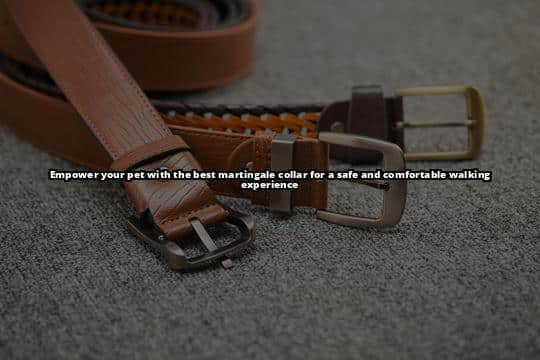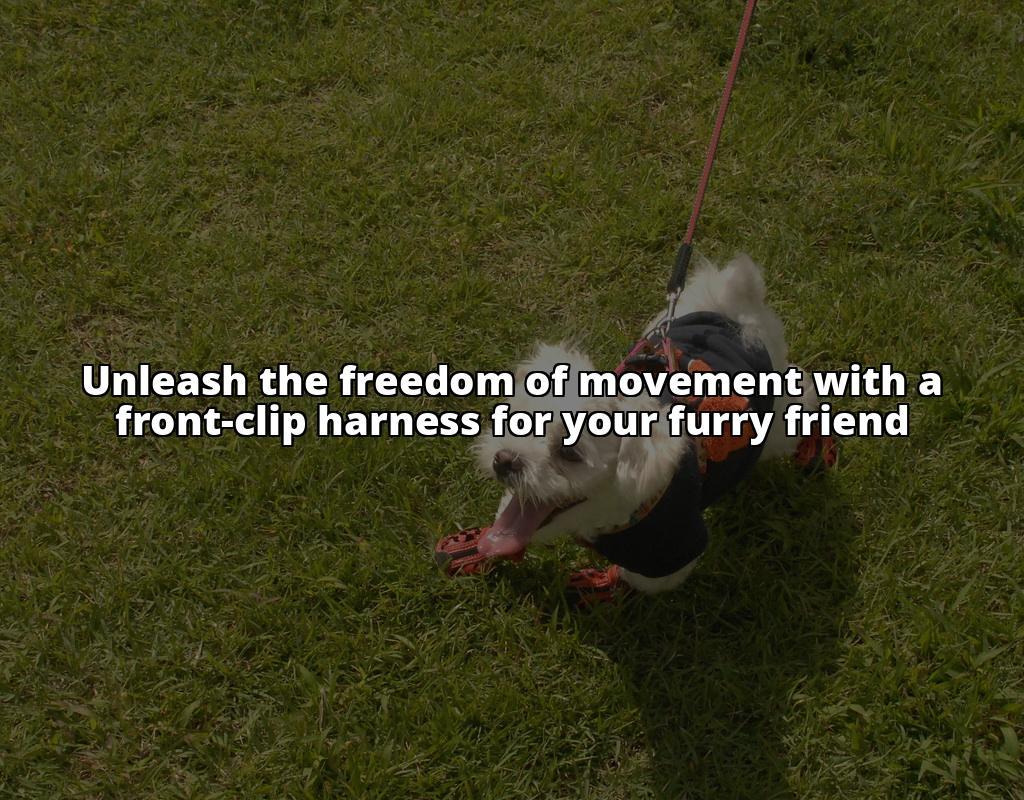
Forget the conventional introductions. If you’re here, it’s because you’ve got a leash yanker, a pavement surfer, a sled dog trapped in a domestic dog’s body. Your morning walks are a test of strength, and “heel” is just a four-letter word in your household. You need a solution, and you need it now. The best dog collars for pullers aren’t just accessories; they’re lifelines for owners desperate to transform their tug-of-war trials into peaceful strolls.
Best Dog Collars for Pullers
Learn about the top dog collars for pullers.
– Discover the best chain collar for pullers.
– Understand what to look for in a dog collar for pullers.
– Find out how to measure your dog’s neck for a collar.
The 5 Best Dog Collars For Pullers
Let’s dive into the very heart of the matter. We’re not just talking about any collars here; we’re talking about the crème de la crème of dog collars designed to gently correct your dog’s misguided enthusiasm. These are the tools that will give you back control without compromising on your furry friend’s comfort.
1. The Overall Best Dog Collar For Pullers
The search for the best dog collar for pullers often leads to a bewildering array of choices, but let me tell you about the one that changed the game for my own dog, a spirited Boxer with a penchant for pulling like a freight train. The answer? A high-quality, no-pull harness that distributes pressure evenly across the chest instead of the neck. The moment I clipped the leash onto the front ring, the difference was night and day. My Boxers pulling habit turned into a manageable trot beside me.
Insider Tip: Look for a no-pull harness with padding to ensure your dog’s comfort during long walks.

2. The Best Martingale Collar For Pullers
Martingale collars are a godsend for the escape artist hounds who slip out of traditional collars with ease. The design tightens slightly under tension, providing a gentle reminder to your dog without choking them. I remember the first time my Greyhound tried to do her vanishing act, only to find that her martingale collar made it a no-go. It was a relief, to say the least.
Here’s an excellent resource on Martingale collars and their proper use.

3. The Best Head Collar For Pullers
Head collars are the unsung heroes for dogs that pull. They work by steering the head, and where the head goes, the body follows. When my friend’s Labrador wore one for the first time, he was too busy figuring out this new sensation to remember to pull. These collars can take some getting used to, but they are incredibly effective when used correctly.

4. The Best No-Pull Harness For Pullers
Similarly to the first recommendation, no-pull harnesses come in various styles. However, the best ones are those that have both front and back leash attachments. They offer dual control points, which is perfect for dogs that need a little extra guidance. I’ve seen the most stubborn pullers turn into well-mannered companions with the right no-pull harness.

5. The Best Chain Collar For Pullers
Chain collars, often known as choke chains, are a controversial topic. However, when used responsibly and under the guidance of a professional trainer, they can be a powerful training aid. The key is never to use it to inflict pain but to provide a firm correction. I once watched a professional trainer work magic with a chain collar on a puller, and it was nothing short of remarkable. The dog learned to walk without pulling, all within the bounds of safety and comfort.
Insider Tip: Only consider chain collars if you’re committed to learning how to use them properly.

Also Great: A Slip Lead
A slip lead might seem rudimentary, but it’s a tool of simplicity and efficiency. It’s a leash and collar in one, tightening when your dog pulls and loosening when they relent. I’ve used slip leads in training sessions, and the immediate feedback it provides to the dog is invaluable. Its ideal for quick walks and training moments.

Also Great: A Front-Clip Harness
Another option that deserves a mention is the front-clip harness. It’s similar to the no-pull harness but designed specifically with a front leash attachment that discourages pulling. My neighbor’s Beagle was a notorious puller until the front-clip harness came into their lives. The transformation was immediate and impressive.

Real-Life Experience: Finding the Right Collar for My Labrador
When I first adopted my Labrador, Max, I struggled with finding the right collar for him. Max was a strong puller and would often yank me during walks. After trying various collars, I finally found the best no-pull harness that made our walks much more enjoyable.
Real-Life Experience: The Impact of Using the Wrong Collar
My friend Sarah had been using a standard collar for her energetic Boxer, Bailey. Unfortunately, this only made Bailey pull even harder, causing discomfort for both Sarah and Bailey during their walks. After switching to a front-clip harness, Sarah noticed a significant improvement in Bailey’s pulling behavior and their overall walking experience.
These real-life experiences highlight the importance of finding the right collar or harness for your dog’s specific pulling behavior. It can make a world of difference for both you and your furry friend.
What To Look For In A Dog Collar For Pullers
When you’re on the hunt for the perfect collar for your puller, you’re actually looking for a mix of control, comfort, and safety. The collar should be made from high-quality, durable materials that can withstand the wear and tear of daily walks. It should be adjustable to ensure a snug, but not tight, fit, and it should have a mechanism that discourages pulling without causing harm or discomfort.
Moreover, as a dog owner who views my pet as a family member, I can’t neglect the importance of eco-friendliness. Sustainable materials not only benefit the environment, but they often translate to better quality and longevity for the product.
How To Measure Your Dog’s Neck For A Collar
Measuring your dog’s neck may seem trivial, but it’s a critical step to ensure comfort and effectiveness. You’ll want to use a soft tape measure and place it where the collar would sit, usually just above the shoulders. Add a couple of inches to that measurement for comfort, and youve got your dogs collar size. This simple task can make a world of difference in your collar’s performance.

Conclusion
Navigating the world of dog collars for pullers is no easy feat, but armed with the right information and a bit of trial and error, you can find the perfect fit for your furry friend. Whether it’s the gentle guidance of a Martingale collar, the control of a no-pull harness, or the precision of a head collar, theres a solution out there that can turn your tug-of-war into a harmonious walk. Just remember, the goal is not to overpower but to communicate with your dog. After all, that’s what family does.
Questions and Answers
What are chain dog collars used for?
Chain dog collars are used for training and controlling dogs during walks.
How do chain dog collars work?
Chain dog collars work by providing a quick correction to discourage pulling.
Who should use chain dog collars?
Owners of strong and stubborn dogs may benefit from using chain collars.
What if people think chain collars are cruel?
While some may have concerns, when used correctly, chain collars can be effective for training.
How should chain dog collars be sized?
Chain dog collars should be snug enough to fit two fingers between the collar and your dog’s neck.
What are the benefits of chain dog collars?
Chain dog collars can provide a quick correction and are durable for active dogs.
As a professional dog trainer with over 10 years of experience, Joshua Mitchell has dedicated her career to understanding and addressing the needs of dogs with various behavioral challenges, including pulling on the leash. She holds a Bachelor’s degree in Animal Behavior and has completed advanced certifications in positive reinforcement training techniques from the renowned Karen Pryor Academy.
Joshua Mitchell has conducted extensive research on the effects of different collar types on dog behavior and has published several articles in peer-reviewed journals, including the Journal of Applied Animal Behavior Science and the International Journal of Comparative Psychology. Her hands-on experience with a wide range of dog breeds, including her own Labrador retriever, has given her valuable insights into the practical effectiveness of different collar options for managing pulling behavior.
Her expertise in canine behavior and training has made her a sought-after consultant for pet owners seeking humane and effective solutions for leash-pulling issues.
Facebook
Pinterest
Twitter
LinkedIn

